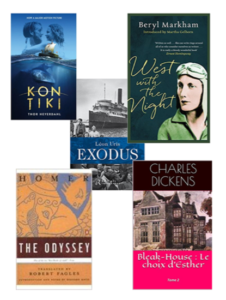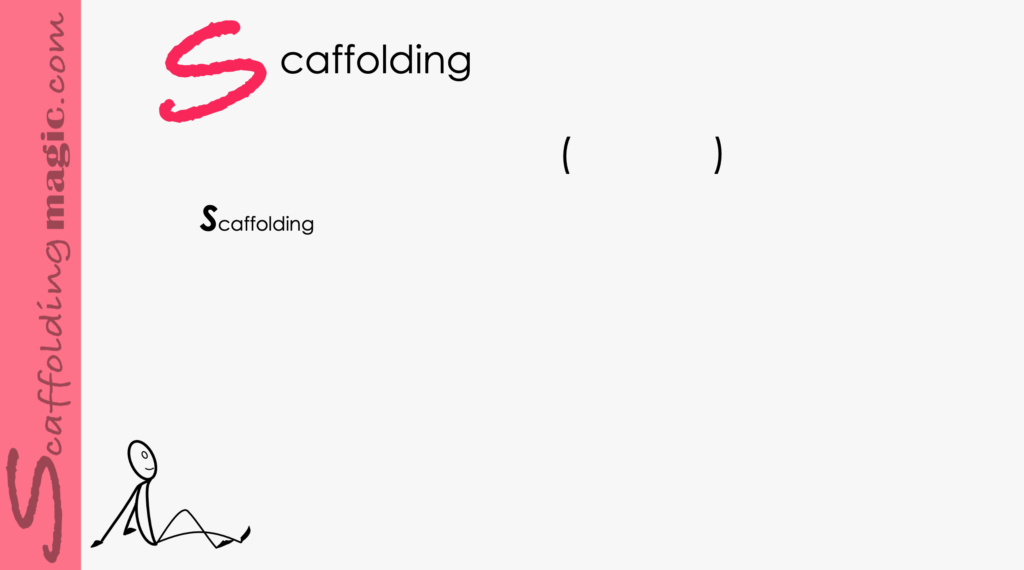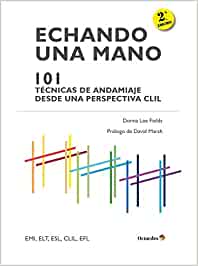You caught a beauty!!!
Download PDF of scaffold here.

Download PDF of scaffold here.
theory behind scaffold…
Book lists are an important part of the structure of the school year and quite frankly can be the difference between our students putting down their phones and picking up a book – or not! Making book lists available to students and parents is a way of outlining the trajectory of the course of studies for the year. This scaffold helps us to make the introduction of the books we’re going to read with our students interactive and a learning experience in itself. It includes ‘soft skills’ (cooperative work, communication development, self-confidence building, etc.), and the core dynamic we’ll use throughout the year (student-centred learning) so that our students understand from the beginning that they are going to be active participants in their own learning.
You can use this scaffold at any point in the school year; however, it is a perfect way of honouring librarians who, on April 17th of every year, all over the world, have their day: International Day of the Librarian. Often the unsung literary heroine or hero of the school – many times in unseen ways– we can help our students to honour their school librarians through direct recognition of the diversity and accessibility of books they make available to us.
Most of us have a favourite book list we use year after year, giving us a comfort level for the material we’ll be using in our classes. For beginning teachers and experienced teachers alike, it keeps us young and vibrant when we update at least some of our book on the list every year. Asking our librarians is usually an easy and efficient way of finding out about new publications. We can also explore new possibilities through up-to-date book lists. Once we’ve decided, this scaffold is way of introducing the list to our students, use higher-level thinking skills in considering them, and help them to look forward to at least some of the titles.
step by step…
- Make a visual collection of the book covers of 10-15 of the books you have chosen for the school year and place the images in a PPT or on large pieces of paper so that all students can see them.

- Use Bloom’s Taxonomy to write questions about each cover that will help students to go from lower-level to higher-level thinking.
NOTE: In the examples below of the questions formed with Bloom’s Taxonomy of Learning, you’ll see that:
- if we use a lot of the academic language necessary to talk about the covers, we give our students the tools to do the same. Later, we also help them to recognise these words, terms and phrases when they begin the books.
- if we include sequencing phrases in our questions, our students will hear them and use them in authentic circumstances, will be able to assimilate order more readily, and will be able to use them with more ease and in more appropriate situations in the future.
- Pair up students,
- Call pairs by prepositions of location (see example below).

- Teacher: Student to the left of Sara, what is the title of the book?
- Student: I’m the student to the left of Sara. The title of the book is West with the Night.
- Teacher: Student to the right of Rigor, How do we know that that is the title of the book?
- Student: I am the student to the right of Rigor. We know it is the title of the book because it is written in the largest font.
- Teacher: Student next to the back window. Who is the author of the book?
- Student: I am the student next to the back window: The author of the book is Beryl Markham.
- Teacher: Student directly under the ‘I have a growth mindset’ sign. How do we know that Beryl Markham is the author of the book?
- Student: I am the student directly under the ‘I have a growth mindset’ sign. We know that Beryl Markham is the author of the book because her name is written in fonts smaller than the title, but larger than the other words on the cover.
- Teacher: Student sitting across from the student with the blue and white striped shirt. How does the colour of the cover make you feel?
- Student: I am the student sitting across from the student with the blue and white striped shirt. The colour of the cover makes me feel curious.
- Etc.
Continue with Questions from Bloom’s Taxonomy of Critical Thinking Questions:

- (Remembering) What is the opposite of ‘west’?
- (Understanding) What does ‘West with the Night’ mean? (There is no one correct answer.)
- (Applying) What does the woman’s hat, the plane and the title have in common?
- (Analysing) How would it change your feeling about the contents of the book if the woman’s expression were different?
- (Evaluating) Do we think this woman is competent at what she does?
- (Creating) If you were to interview this woman before knowing anything about who she is or what she did, what would you ask her based on the cover?
- Continue this dynamic until you’ve introduced all the book covers you’ve chosen.
- Reflection: Students write 100-150 words on one of the book covers you’ve reviewed together, explaining why or why they are not looking forward to reading them. You want your students to be able to have a forum to express themselves, and as long as they do it respectfully and using valid points, they can feel free to express themselves honestly
as a continuation – interaction with the Librarian…
- The Librarian goes through a similar dynamic as above of asking and eliciting answers about the book covers you have gone over in class, and then asks about the new covers.
- You’ll know by your students’ participation if they’ve assimilated the vocabulary from the books you’ve chosen and will be able to evaluate how much of the academic language they’ve learned by the vocabulary they use to express knowledge about the books the Librarian has chosen.
- In the end, one of our goals is that they gain respect the valuable resource the Librarian is for them, and that they now feel a sense of familiarity with the library.
*If our students can work in pairs, they feel more supported in their scholastic activities and so their anxiety levels are reduced and their learning increases.
ideas for new books…
Best Books for High School Students
100 Novels All Kids Should Read Before Learing High School
Best Books for High School Students


Scaffoldingmagic.com is your entryway into DYNAMIC bilingual learning methodologies, such as Phenomenon-Based Learning, CLIL, EMI, and ESL. You’ll find ways to implement critical thinking tools (DOK) to promote higher level thinking, the growth mindset, instill an ethic of excellence, deep reflection on learning, and all through multi-cultural, interdisciplinary activities. We have the keys to turning competences into action and to creating collective efficacy in your school so you move ahead as a unified, enthusiastic team.





